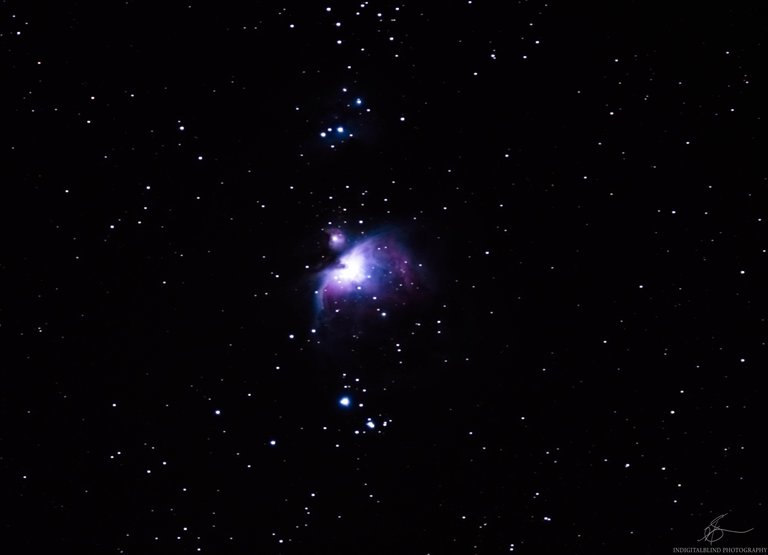Deep Space Photography Series: Orion Nebula
I just remembered that I haven't shown you what I captured of the Orion nebula. It was in February when I took it but for some reason I forgot about it. I remember it was a really cold time when I decided that today is the day I want to try and photograph this nebula. Most important factor wast that the sky was clear and no clouds were in sight. I drove to a far corner of northwest Estonia because this is one of the darkest places in Estonia. I can't afford any light pollution on my photos.
When we arrived I set up my camera equipment and started shooting.
The Technicals
I didn't use any telescope for this shot. My Nikon D5600 and Tamron 70-200mm f2.8 telephoto lens were used for this. Since the camera body is a crop sensor, this made my 200mm lens act as 300mm instead. Obviously a quality tripod was used and I also used an external shutter button and timer to minimize vibrations. Oh, and I also used a delayed shutter mode for the same reason.
For picture settings, I used a 1.6-second shutter speed. I wasn't able to use any longer because Orion startrs to drift in my frame when shot any longer with a 300mm lens. 8000 ISO was used to get the brightness I need but I couldn't go any higher because the noise was too much. Also, I used 2.8, wide-open aperture for obvious reasons.
In total, I took around 200 light frames, 50 dark frames and 30 bias frames. I had to realign my camera after every 20 shots because of the Orion drifted out of the frame. All these shots I stacked together to one photo using deep sky stacker and later exported this as TIFF file and it was 3.5 gigabytes large. Finally, I loaded it up on Adobe Lightroom and post-processed the photo.
This is the end result.

Orion Nebula
The Orion nebula, also known as Messier 42 or NGC 1976 is situated in our Milkyway galaxy. It is one of the brightest nebulas in our night sky and is also visible to the naked eye when watched from a dark place. Orion is 1344+- 20 lightyears away from us and is one of the closest regions of massive star formations to earth. On the opposite of Orion you can also see Messier 43 the running man nebula.
Orion nebula is a great example of the place where new stars are being formed. Observations have shown us that approximately 700 stars in various stages are in formation within the nebula.
Well, I hope to get more shots of various deep space objects this winter but we will see is it even possible for me with my equipment to get photos od dimmer and farther situated objects.
Of course one day I would really like to buy myself a telescope as well or at least auto tracker so I can use longer shutter speeds.
Tell me what you think of the photo!

@greddyforce, Specially i enjoy learning more about the Orion Belt because in my opinion it's the most mysterious aspect. Keep up the good work and good to know that you've travelled a long to capture this picture. Stay blessed.
Posted using Partiko Android
Yeah, it's interesting to learn about all the aspects of space. Still too many mysteries in need of answers.
Thanx!
Welcome and that's true.
Posted using Partiko Android